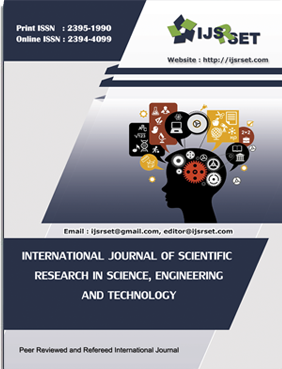Personality Traits and Classification using Machine Learning
Keywords:
Naïve Bayes Algorithm, Automated Personality Classification, Classification, Data Mining, Support Vector MachineAbstract
Personality is one feature that determines how people interact with the outside world. Personality can be defined as a necessary element of a person’s behavior. The way people interact with other people determines their personality. This project covers the topic of Automated Personality Classification [1] – a system that analyses the personality of a user based on certain features using Data Mining Algorithms. In this project, a system is proposed which analyses the personality of an applicant. This system will be helpful for organizations as well as other agencies who would be recruiting applicants based on their personality rather than their technical knowledge. The personality prediction results are based on Big Five Personality traits and the classification is done using Naïve Bayes Algorithm and Support Vector Machine [2].
📊 Article Downloads
References
I. Cantandir, I. Fernandez-Tobiaz, A. Belllogin, "Relating personality types with user preferences in multiple entertainment domains," EMPIRE 1st Workshop on Emotions and Personality in Personalized Services, 2013.
Aleksandar Kartelj, Vladimir Filipović, Veljko Milutinović, Novel approaches to automated personality classification: Ideas and their potentials.
R. Wald, T. M. Khoshgoftaar,A. Napolitano Using Twitter Content to Predict Psychopathy.
Fazel Keshtkar, Candice Burkett, Haiying Li and Arthur C. Graesser,Using Data Mining Techniques to Detect the Personality of Players in an Educational Game.
Yago Saez , Carlos Navarro , Asuncion Mochon and Pedro Isasi, A system for personality and happiness detection.
J. Golbeck, C. Robles, K.Turner, "Predicting personality with social media," In CHI’11 Extended Abstracts on Human Factors in Computing Systems, pp. 253-262, 2011
Nurbiha A. Shukora, Zaidatun Tasira, Henny Vander Meijden, “An Examination of Online Learning Effectiveness using data Mining”, Science Direct – Procedia – Social and Behavioural Sciences 172 (2015) 555 – 562.
C.D. Manning, P. Raghavan, H. Schutze. Introduction to Information Retrieval. Cambridge UP, 2008.
P.T. Costa, R.R. McCrae, "Revised NEO personality inventory (NEOPI-R) and NEO five-factor inventory (NEO-FFI)," Psychological Assessment Resources, 1992.
Crist´obal Romero, Member, IEEE, and Sebasti´an Ventura, Senior Member, IEEE, “Educational Data Mining: A Review of the State of the Art” VOL. 40, NO. 6, NOVEMBER 2010.
D. Jurafsky, J. H. Martin, “Naive Bayes Classifier Approach to Word Sense Disambiguation”, Chapter 20 Computational Lexical Semantics, available at (http://www.let.rug.nl/nerbonne/teach/rema-stats-methseminar/presentations/Olango-Naive-Bayes-2009.pdf), last seen 2015.
H. Walia, A. Rana, and V. Kansal, “A Naïve Bayes Approach for working on Gurmukhi Word Sense Disambiguation”, 6th international Conference on Reliability, Infocom Technologies and Optimization (Trends and Future Directions) (ICRITO), 2017, IEEE Explorer. 1023
Downloads
Published
Issue
Section
License
Copyright (c) 2024 International Journal of Scientific Research in Science, Engineering and Technology

This work is licensed under a Creative Commons Attribution 4.0 International License.




